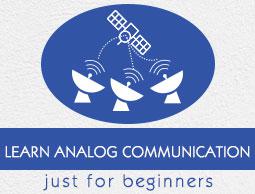Analog Communication - Transducers
Transducer is a device, which converts energy from one form to other. In this chapter, let us discuss about the transducers used in communication systems.
Why do We Need Transducers?
In the real world, communication between any two nearby persons takes place with the help of sound waves. But, if the persons are far away, then it is difficult to convey the information without any loss by using sound waves in its physical form.
To overcome this difficulty, we can use modulators in the transmitter section and demodulators in the receiver section. These modulators and demodulators operate with electrical signals. That’s why we require a device, which has to convert the sound waves into electrical signals or vice versa. That device is known as a transducer.
Following is a simple block diagram of a transducer.

This transducer has a single input and a single output. It converts the energy present at the input into its equivalent output having another energy. Basically, a transducer converts the non-electrical form of energy into an electrical form or vice versa.
Types of Transducers
We can classify the transducers into following two types based on the placement (position) of the transducer in communication systems.
- Input Transducer
- Output Transducer
Input Transducers
The transducer present at the input of the communication system is known as an input transducer. Following is the block diagram of an input transducer.

This input transducer converts the non-electrical physical quantity into an electrical signal. The physical quantities such as sound or light can be converted into electrical quantities such as voltage or current by using this transducer. Example: Microphone.
Microphone is used as the input transducer, which is placed between the information source and the transmitter section. The information source produces the information in the form of sound waves. The microphone converts these sound waves into electrical signals with the help of a diaphragm. These electrical signals can be used for further processing.
Output Transducers
The transducer present at the output of communication system is known as output transducer. Following is the block diagram of an output transducer.

This output transducer converts the electrical signal into non-electrical physical quantity. The electrical quantities such as voltage or current can be converted into physical quantities such as sound or light by using this transducer. Example: Loudspeaker.
The loud speaker is used as the output transducer, which is placed between the receiver section and the destination. The demodulator present in the receiver section produces the demodulated output. So, the loud speaker converts the electrical signals (demodulated output) into sound waves. Therefore, the functionality of the loud speaker is just opposite to the functionality of the microphone.
In addition to the above transducers, there is one more transducer which is used in communication systems. This transducer can be placed either at the end of the transmitter section or at the starting of the receiver section. Example: Antenna.
An Antenna is a transducer, which converts electrical signals into electromagnetic waves and vice versa. An Antenna can be used either as a transmitting antenna or as a receiving antenna.
A transmitting antenna converts electrical signals into electromagnetic waves and radiates them. While, a receiving antenna converts electromagnetic waves from the received beam into electrical signals.
In this two-way communication, the same antenna can be used for both transmission and reception.





